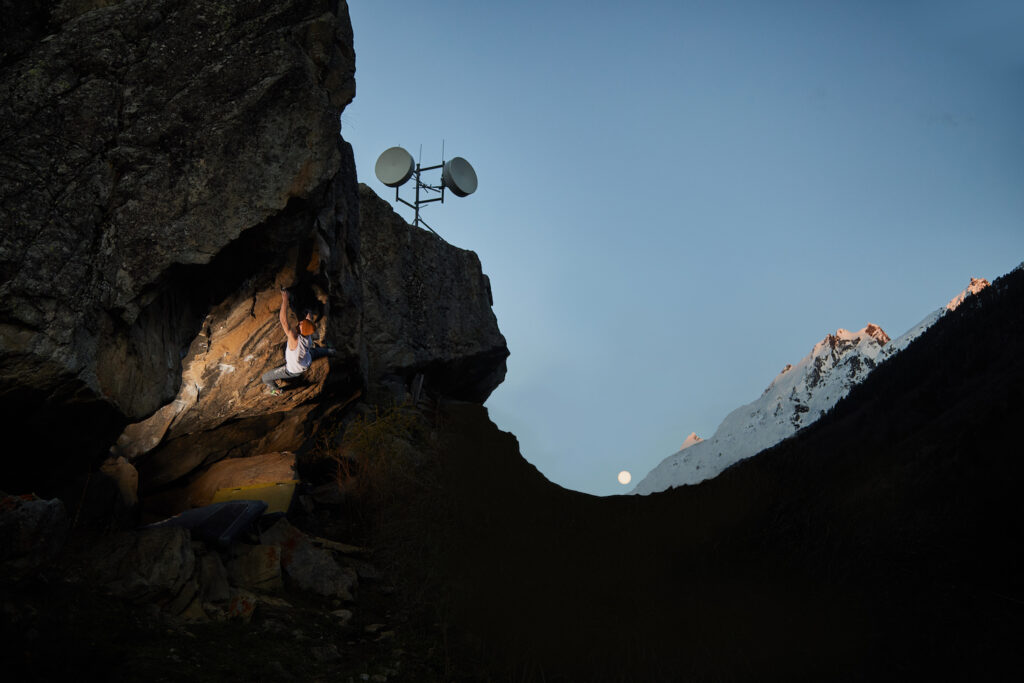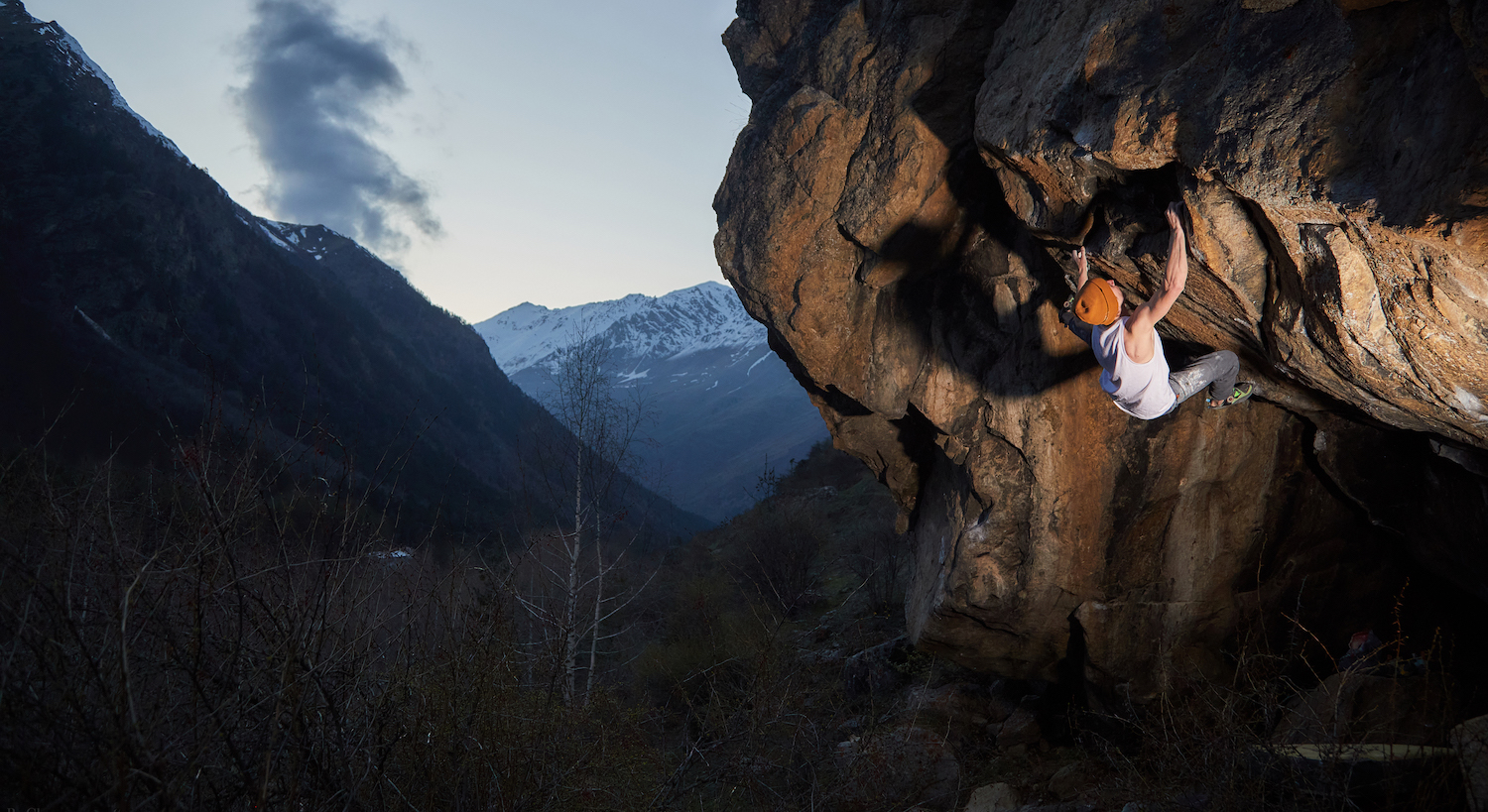At the foot of Mount Elbrus, in the Djan-Tugan region of Russia, lies a river valley lined with granite boulders, all polished to perfection by snowmelt over the millennia.
Tenaya athlete Vadim Timonov has dedicated three trips to the area to explore and establish new lines. Yet his main goal, he says, was a boulder close to the entrance, which largely went ignored because of its position and difficulty. The Blackflip project.
“I spent many days finding the right body position on the wall to make the moves, and a lot of days putting all those moves together and climbing it,” he says. The crux came down to the problem’s complexity and need for full-body tension to link the moves.
Timonov managed to send the stand start at the end of April, which he graded 8C (V15), and then in May all of the pieces finally came together for the elusive sit start. He proposed the grade of 8C+/9A (V16/17) for the complete problem. “I give this grade based on my own experience, relying on boulders that I have made and tried all over the world,” he says. “I put a slash only because of some fear of declaring the highest grade, because I know that more is possible!”
Here’s what else Vadim Timonov has to say about the ascent and climbing in the region (plus, watch the full video below).
Q&A with Vadim Timonov:
Can you tell us more about the region and what the bouldering is like? Is there more potential?
Djan-Tugan is a two-hour drive from the nearest airport, and all of the infrastructure is there, including hotels, car rental, restaurants, etc. It’s a fairly large area. We still have a long way to go to unlock its full potential. Maybe I’ll get into it soon.
What’s the rock quality and general style of climbing like?
The quality of the stone is perfect! In the river it is burnished granite, very similar in texture to the dual-texture volumes in the gym. Here you can find all styles, from Switzerland to Fontainebleau.
How did you find this specific boulder and the Blackflip project?
I walked around the area a lot—I probably spend more time on this than climbing—although this boulder is located at the entrance to the area. But since the stone is high and the problem is hard, it was not popular.
What were your first impressions? Did you think it was possible at first?
I doubted for a very long time that this was possible, until the day I did it.

Describe the movements of the problem. What’s the crux?
The hardest part is to make the whole connection out of all the moves. The crux is a few moves in the middle. Total: 12 hand movements. You need a lot of core strength to keep your body on the wall.
Approximately how many sessions and attempts did it take you?
I didn’t count the number of sessions, but I spent a lot of time on each of my three trips there.
How does it compare to other hard boulders you’ve climbed?
All boulders are different. The main difference between this one and others is complexity. I can’t remember where else I was so tense during the climbing.
Do you have plans to return to the Djan-Tugan area?
Yes! I would love to return there to explore new sectors.
Anything else to add or highlight?
I understand it’s not the ideal time to travel there right now, but I’m sure this railroad might be on the list of the best in the world.
